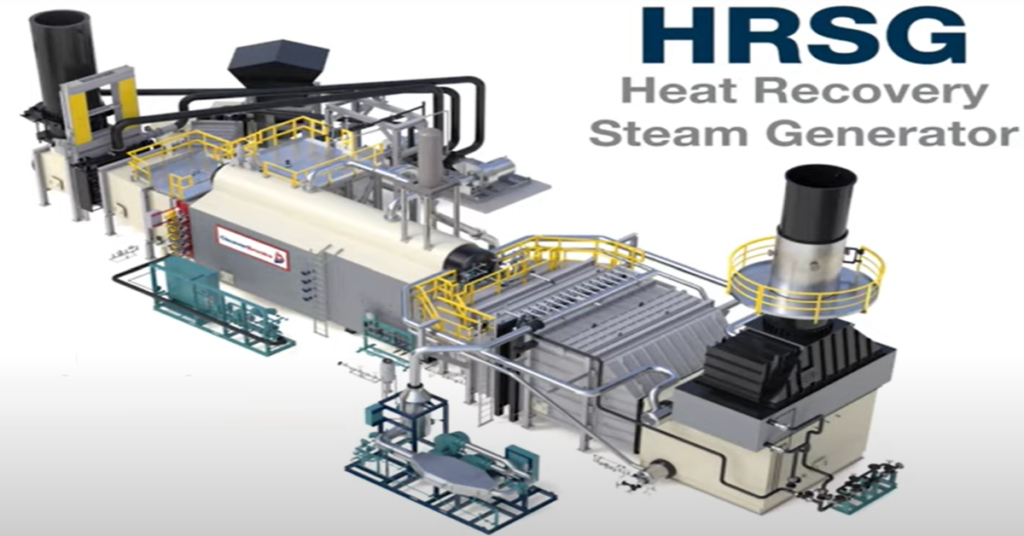Today, we explain about HRSG, which stands for Heat Recovery Steam Generator. HRSGs come in various configurations depending on steam pressure, including single pressure, dual pressure, and even triple pressure systems.

Let’s go on a journey to understand the intricacies of a single pressure HRSG and explore how it functions within a steam power plant.
Heat Recovery Steam Generator.
In a single pressure HRSG, the arrangement is typically horizontal, with hot exhaust gases from a gas turbine passing through. As these gases exchange heat with water, the gas temperature decreases until the extracted thermal energy is sufficient, at which point the gases exit through a chimney. This thermal energy is then utilized to generate steam, which drives a steam turbine to produce power. The steam generation process involves three main stages: economization, evaporation, and superheating.
Economizer in HRSG.
The economizer, located at the beginning of the process, increases the temperature of liquid water. In short, economizer allows system to recover heat as much as possible.

Next, in the evaporator section, water undergoes evaporation to produce steam. Finally, in the superheater, the steam’s temperature is further increased. Throughout this process, the gas temperature decreases gradually, matching the steam temperature increase, maximizing energy transfer efficiency.
Duct Burner.

The duct burner in an HRSG (Heat Recovery Steam Generator) serves as an additional heat source to increase the temperature of the gas stream before it enters the HRSG. Its primary role is to augment the thermal energy available for steam generation, thereby enhancing the overall efficiency and power output of the system.
However, achieving optimal efficiency in HRSGs is a complex task. The temperature profiles of the gas and steam streams pose challenges. Ideally, minimizing the temperature difference between these streams maximizes efficiency, but practical constraints necessitate a finite difference known as the pinch temperature. Additionally, an approach temperature ensures that steam generation begins without boiling in the economizer, safeguarding equipment integrity.
To enhance HRSG efficiency, several strategies are used. These include optimizing the arrangement of heating surfaces to maximize heat exchange, implementing auxiliary firing to increase gas temperature, and incorporating secondary surfaces like condensate heaters or deaerators to extract additional thermal energy. Moreover, reducing gas-side resistance to heat transfer through fin designs and minimizing pinch and approach temperatures further optimize performance.
Selective Catalytic Reactors (SCRs).
In larger systems, such as dual pressure HRSGs, multiple pressure levels allow for increased efficiency. By dividing the system into low and high-pressure sections, steam generation is optimized, resulting in parallel temperature profiles between gas and steam streams. Additionally, selective catalytic reactors (SCRs) are often integrated into HRSGs to reduce NOx emissions, further enhancing environmental sustainability.

So, HRSG play a vital role in maximizing energy efficiency in steam power plants. Through careful design and optimization, these systems harness waste heat to generate additional power, contributing to a more sustainable energy landscape. As we continue to innovate and refine HRSG technology, we pave the way for a greener and more efficient future.
Thank you for visiting us on this exploration of HRSGs.